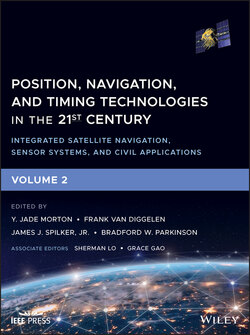Читать книгу Position, Navigation, and Timing Technologies in the 21st Century - Группа авторов - Страница 92
38.5.4.3 Aerial Vehicle Navigation
ОглавлениеTwo identical UAVs (mapper and navigator) were equipped with the cellular CDMA navigation receiver discussed in Section 38.5.2. Here, both the mapper and navigator were mobile. The receivers were tuned to the cellular carrier frequency 882.75 MHz used by the US cellular provider Verizon Wireless. The mapper and navigator were listening to the same four BTSs with known positions. The mapper was estimating the BTSs’ clock biases via a WLS estimator as discussed in Section 38.4.1. Similar to the ground vehicle navigation setup, the height of the navigator was a known constant in the local 3D frame, and only the navigator’s 2D position and its clock bias were estimated through the WNLS, whose weights and initialization were calculated in a similar way as the ground vehicle navigation setup. The ground‐truth references for the mapper and navigator trajectories were taken from the UAVs’ onboard navigation systems, which use GPS, INS, and other sensors. Figure 38.25 shows the BTS environment in which the mapper and navigator were present as well as the experimental hardware setup. The navigator’s true trajectory and estimated trajectory from cellular CDMA pseudoranges are shown in Figure 38.26.
